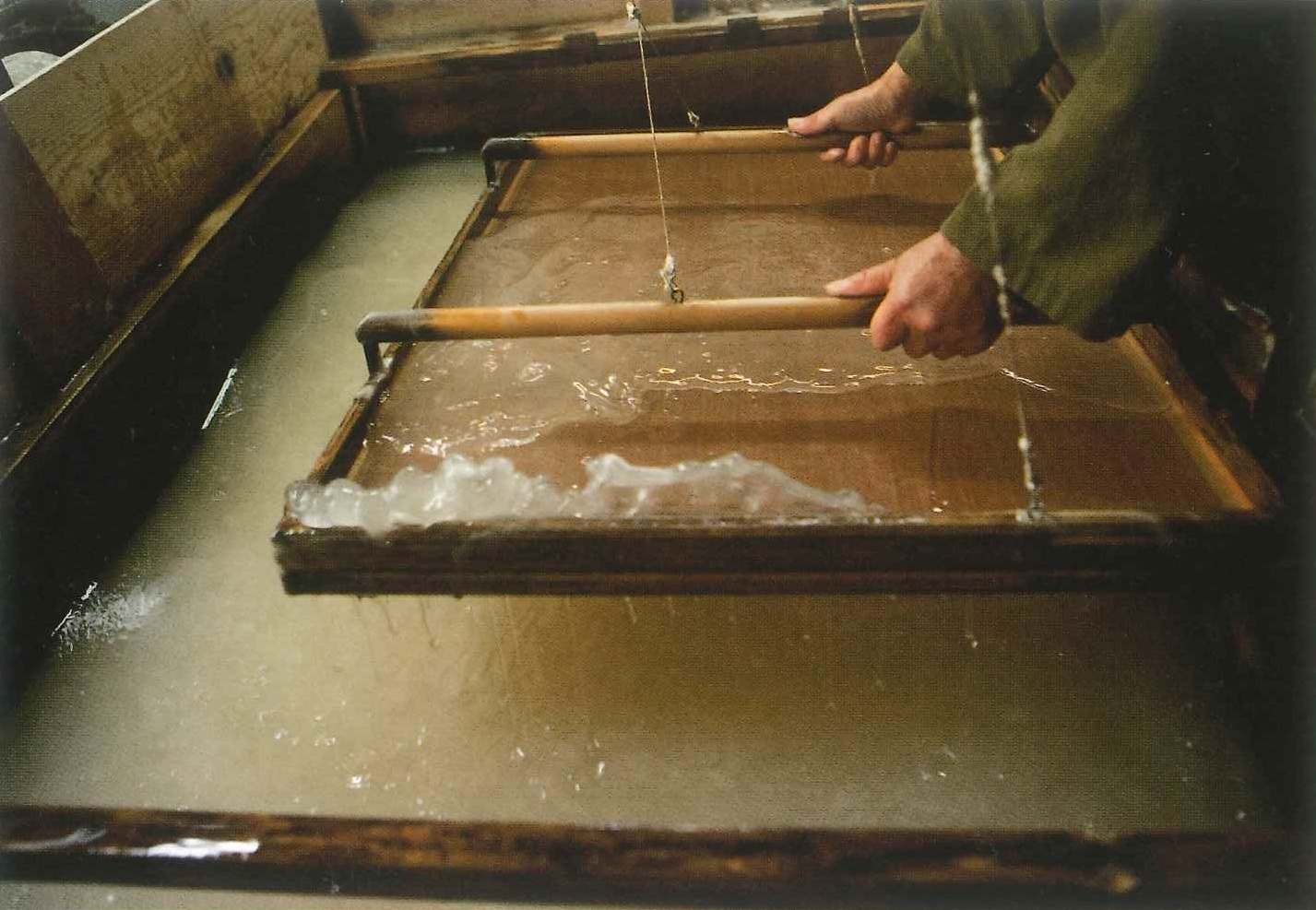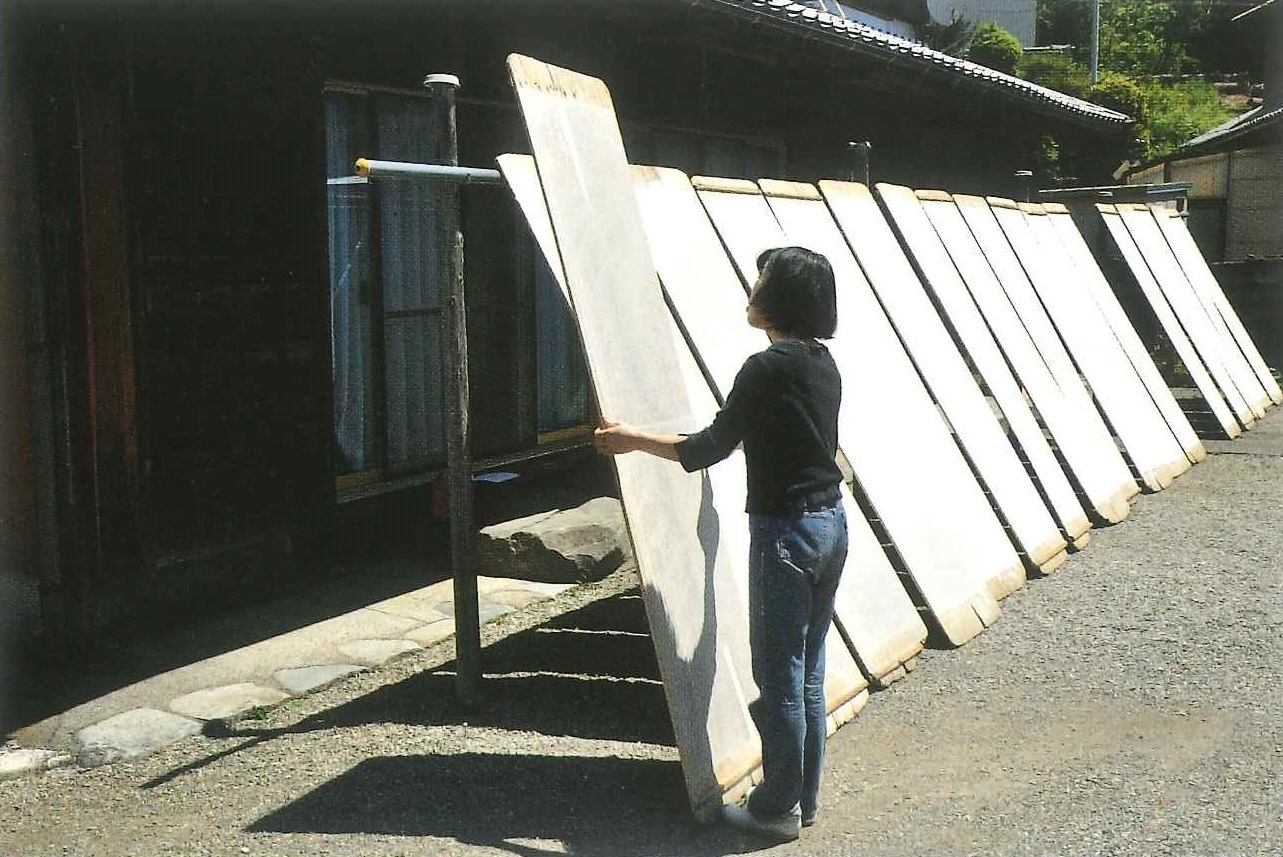Many types of washi paper are made in the Mino area, including handmade and machine-made papers. The highest-quality paper is Hon-minoshi, a lightweight washi valued for its strength, durability, smooth texture, and unblemished appearance. Washi labeled Hon-minoshi (literally, “genuine Mino paper”) must meet strict criteria. In 2014, the production techniques of three types of washi were added to the UNESCO Representative List of the Intangible Cultural Heritage of Humanity: Hon-minoshi from Gifu Prefecture, Sekishubanshi from Shimane Prefecture, and Hosokawashi from Saitama Prefecture.
Hon-minoshi paper meets the following criteria:
1. Daigo nasu kozo (paper mulberry) from Ibaraki Prefecture is the only raw material used for the pulp.
2. Production must use traditional methods and tools:
• Boiling the white inner kozo bark with plant or soda ash
• No use of chemical bleaches or added pigments
• Pounding of the bast fibers by hand or a special machine
• Sunset hibiscus (tororoaoi) used as the dispersant to prevent the fibers from clumping
• Kagitsuke or sogitsuke bamboo screens
• The rocking technique of nagashizuki must be employed to make paper with superior durability
3. The paper must have the characteristic color, luster, and texture of Hon-minoshi.
In addition, Hon-minoshi must be made in Mino by a member of the Association for the Preservation of Hon-minoshi Papermaking. All materials must be traceable, and the materials and manufacturing methods must not damage the environment or the health of the workers.
Hon-minoshi has played an important role in rural communities for generations by supporting the production of raw materials and ensuring the longevity of traditional tools and artistic techniques. Historically, Hon-minoshi has supported the economic development of Mino and helped to protect the area’s natural environment through sustainable manufacturing.


